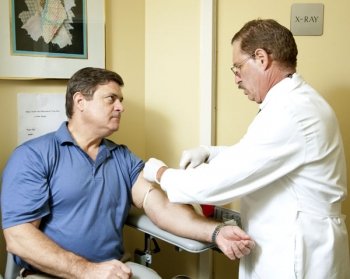A 48 year old male patient, Mr. CS, came to see me with a complex problem which included feelings of depression, muscular twitching, weakness, fatigue and periods of memory loss. He has been a highly successful real estate business man but because of his illness, he was a risk of losing his job. He called me on a Saturday on my cell phone and related his complaints. After I heard his predicament, I logged onto my office computer from home and immediately scheduled him for a Monday appointment.
Upon his Monday visit, I was able to spend enough time examining him and formulating a diagnostic plan which was to see a neurologist as soon as possible. The wait time in my area for neurology consults is over 7 weeks. While CS was in my office, I called my neurologist colleague and pressed for an expedited appointment over the next 48 hours. I emphasized to the neurologist that I knew this man and something was definitely going on which needed rapid diagnosis and treatment. By the end of the week the patient had a diagnosis. Mr. CS had a history of multiple concussions while playing sports. His EEG revealed a form of epilepsy most likely related to multiple concussions. He was placed on anti-epilepsy medications and within two weeks he was much improved and able to work and focus.
The point of this example of Nu-Living Concierge Medicine in “real life” was the various ways the program allowed me to rapidly help CS. First, he was able to reach his personal physician by phone on a weekend. The Nuliving electronic medical record system allowed me to access my office on the weekend to schedule an appointment immediately. The limited member patients I see allowed enough time for me to thoroughly evaluate his case and to personally call and appeal to the neurologist for an expedited appointment. Finally, because I knew CS, I recognized that something very serious was occurring, an unlikely scenario in situations where patients see multiple physicians and don’t have one who really knows them.


